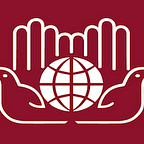A Closer Look at Economic Reintegration for Ex-Combatants
The United Nations defines reintegration as “the process by which ex-combatants acquire civilian status and gain sustainable employment and income.” It has both social and economic aspects and takes place at a local level. The focus on long-term reintegration is relatively recent. Previous efforts that focused only on short-term reintegration led to the increased risk that ex-combatants, isolated and unemployed, would re-arm. Reintegration is the most challenging phase and has been referred to as the Achilles heel of Disarmament, Demobilization, and Reintegration (DDR) programming. Despite the difficulties of implementing a successful reintegration program, some positive lessons have shown that it is a crucial part of rebuilding the community and preventing future conflict.
Reintegration differs from reinsertion, which is short-term material and financial assistance such as cash allowances, food, clothes, shelter, and medical services. Reinsertion is part of the demobilization process and meets immediate needs, while reintegration is longer-term and focused on a continuous process of development.
Economic reintegration provides a variety of training for ex-combatants to learn to live in civil society, especially after protracted conflicts. Learning life skills such as nonviolent conflict resolution, appropriate professional and social behavior, and the management of domestic tasks can aid ex-combatants in integrating back into a non-military society. Vocational training teaches new and marketable skills; education programs, especially for young ex-combatants, provide opportunities for continued or remedial learning. Apprenticeships and on-the-job training are the most likely to result in sustainable employment because they provide valuable trade skills and connect ex-combatants to existing socioeconomic networks. Microloans and support for small businesses can jumpstart a labor market damaged by sustained conflict.
Social reintegration is a crucial partner of economic reintegration. In addition to re-entering the job market, ex-combatants must have support in re-entering the community. Reconciliation and trust-building programs can help the process of healing for both ex-combatants and victims. Social reintegration also addresses physical health and psychosocial issues such as PTSD, substance abuse, and HIV/AIDS, all of which are prevalent in former soldiers.
While less prominent in DDR than social and economic reintegration, political reintegration also plays a role in broader peacebuilding efforts. At the group level, political reintegration aims to transform a previously armed group or organization into a legitimate political party, whose grievances and community goals can be addressed in a nonviolent way. At the individual level, ex-combatants must reintegrate into civic society and have decision-making abilities, especially the power afforded by voting.
DDR programs, and their reintegration components in particular, often overlap and work in tandem with other peacebuilding and peacekeeping efforts. Community Violence Reduction (CVR) is one such initiative that “works directly with target communities to find solutions to causes of armed violence.” CVR is currently implemented by UN Peace Operations as a complement to DDR in the Democratic Republic of Congo, the Central African Republic, Mali, and Darfur. The UN first mandated CVR in 2006 in Haiti, where it replaced DDR because of a lack of formal armed conflict.
CVR programs are short-term stabilization measures for transition times, such as between demobilization and reintegration phases. Through vocational skills and training, income-generating activities and inter-community dialogues, CVR programs link participants to DDR processes in a flexible, community-centered way.
Reintegration efforts are also closely linked to transitional justice. Reparations focus on justice for victims of human rights violations and provide a combination of material and symbolic benefits to victims. In a parallel process, DDR assists ex-combatants. When these processes are isolated from each other, or if the rights of victims are ignored, new grievances may arise, and a program may be viewed as rewarding ex-combatants. When reintegration and reparations happen together, though, they are mutually reinforcing and beneficial.
Transitional justice also often includes truth commissions or fact-finding missions to investigate and report on past abuses. These commissions help a society understand a contested history and prevent future abuses. They also provide an opportunity for ex-combatants to tell their own stories and open up possibilities for reconciliation. Locally-based justice processes complement reintegration programs, with community-level means of addressing the accountability of ex-combatants. When DDR programs are integrated with transitional justice and CVR measures, they are much more likely to succeed and provide a more comprehensive path to a peaceful and reintegrated community.
Written By Lydia Henning, Refuge Press Intern, Summer 2019
About the IIHA
The Institute of International Humanitarian Affairs (IIHA) prepares current and future aid workers with the knowledge and skills needed to respond effectively in times of humanitarian crisis and disaster. Our courses are borne of an interdisciplinary curriculum that combines academic theory with the practical experience of seasoned humanitarian professionals. The IIHA also publishes on a wide range of humanitarian topics and regularly hosts a number of events in the New York area, including the annual Humanitarian Blockchain Summit and Design for Humanity Summit.
For media inquiries, please contact: Camille Giacovas, Communications & Research Officer, IIHA cgiacovas@fordham.edu
